Age
Key Takeaway: HR directors in large organisations tend to be older, predominantly in the 40-60 age range. Small organisations have a more diverse age distribution, including a notable proportion of younger HR directors.
Small Organisations:
- 30-40 years: 35%
- 40-50 years: 40%
- 50+ years: 15%
- Below 30 years: 10%
Medium-Sized Organisations:
- 35-44 years: 40%
- 45-55 years: 35%
- 55+ years: 15%
- Below 35 years: 10%
Large Organisations:
- 40-50 years: 45%
- 50-60 years: 35%
- 60+ years: 10%
- Below 40 years: 10%
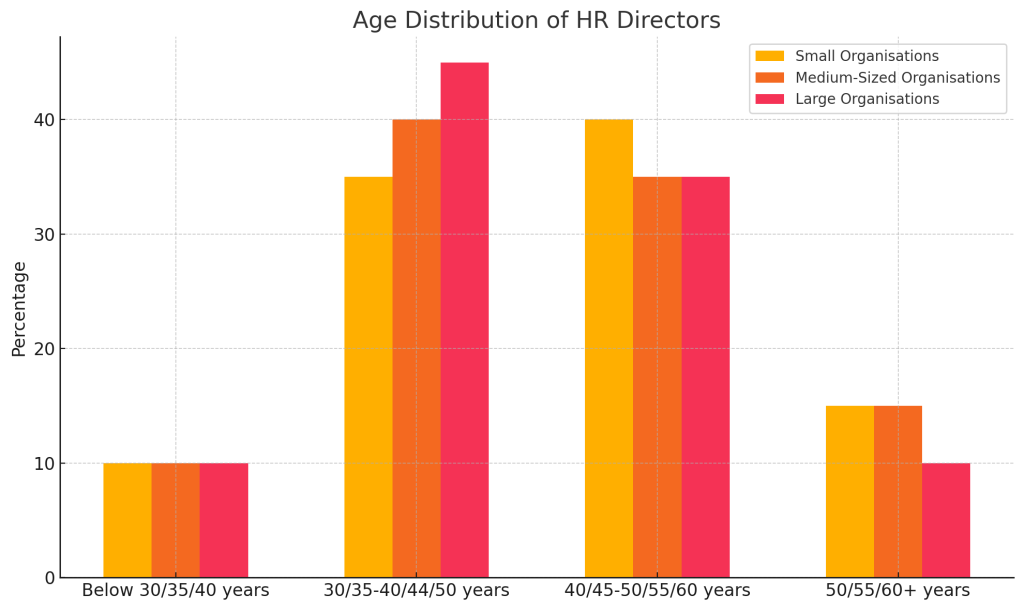
Gender
Key Takeaway: While the HR field is predominantly female, large organisations have a slightly more balanced gender distribution compared to small and medium-sized organisations.
Small Organisations:
- Female: 65-70%
- Male: 30-35%
Medium-Sized Organisations:
- Female: 70-75%
- Male: 25-30%
Large Organisations:
- Female: 60-65%
- Male: 35-40%

Education
Key Takeaway: Large organisations have a higher percentage of HR directors with advanced degrees and professional certifications. Small organisations show a more varied educational background.
Small Organisations:
- Bachelor’s Degree: 55%
- Master’s Degree: 25%
- Professional Certifications (e.g., CIPD): 70%
- Doctorate: 3%
Medium-Sized Organisations:
- Bachelor’s Degree: 60%
- Master’s Degree: 30%
- Professional Certifications (e.g., CIPD): 80%
- Doctorate: 5%
Large Organisations:
- Bachelor’s Degree: 50%
- Master’s Degree: 40%
- Professional Certifications (e.g., CIPD): 85%
- Doctorate: 5%
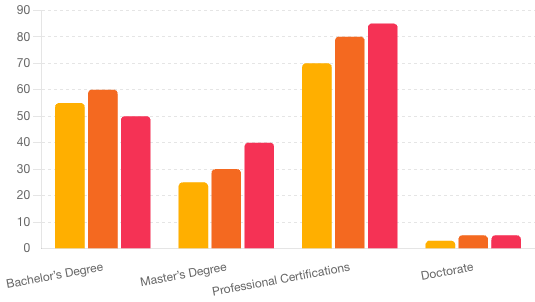
Experience
Key Takeaway: HR directors in large organisations generally have the most experience, with many exceeding 15 years in the field. Small organisations have a higher proportion of HR directors with 5-10 years of experience.
Small Organisations:
- 5-10 years: 40%
- 10-15 years: 35%
- 15+ years: 25%
Medium-Sized Organisations:
- 10-15 years: 50%
- 15-20 years: 30%
- 20+ years: 20%
Large Organisations:
- 15-20 years: 50%
- 20-25 years: 30%
- 25+ years: 20%
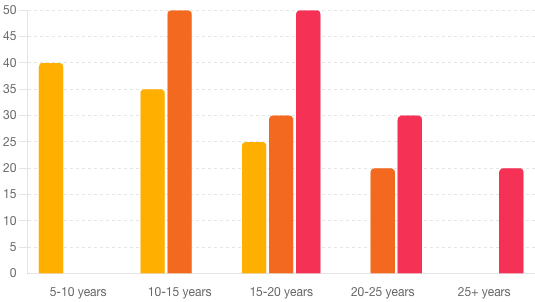
Location
Key Takeaway: Large organisations have a higher concentration of HR directors in London compared to small and medium-sized organisations, which have a more even distribution across various regions.
Small Organisations:
- London: 25%
- South East England: 20%
- Midlands: 20%
- North West: 15%
- Other regions: 20%
Medium-Sized Organisations:
- London: 30%
- South East England: 20%
- Midlands: 15%
- North West: 15%
- Other regions: 20%
Large Organisations:
- London: 40%
- South East England: 20%
- Midlands: 15%
- North West: 15%
- Other regions: 10%

Professional Network
Key Takeaway: HR directors in large organisations have higher engagement with professional networks and bodies, indicating a strong emphasis on continuous professional development.
Small Organisations:
- CIPD Membership: 70%
- Other Professional Bodies: 15%
- Participation in HR Forums and Conferences: 60%
Medium-Sized Organisations:
- CIPD Membership: 80%
- Other Professional Bodies: 20%
- Participation in HR Forums and Conferences: 70%
Large Organisations:
- CIPD Membership: 90%
- Other Professional Bodies: 30%
- Participation in HR Forums and Conferences: 80%
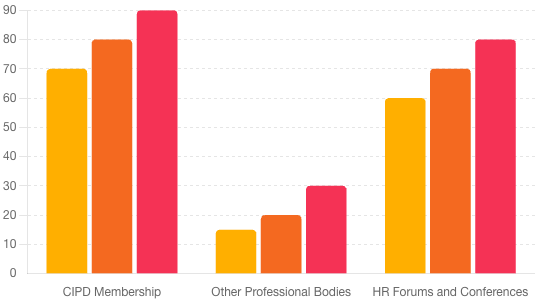
Conclusion
The demographics of HR directors vary significantly across small, medium-sized, and large organisations in England. Large organisations tend to have more experienced and highly educated HR directors, with a strong presence in London and higher engagement in professional networks. Small organisations exhibit more diversity in age and experience, with a more even geographic distribution. Medium-sized organisations tend to fall somewhere in between, sharing characteristics with both small and large organisations.
Understanding this is vital depending on who you’re targeting with your outreach. You don’t want to waste £1,000s on events to get in front of smaller organisations.
One System, One Provider, One Price
It's in the name
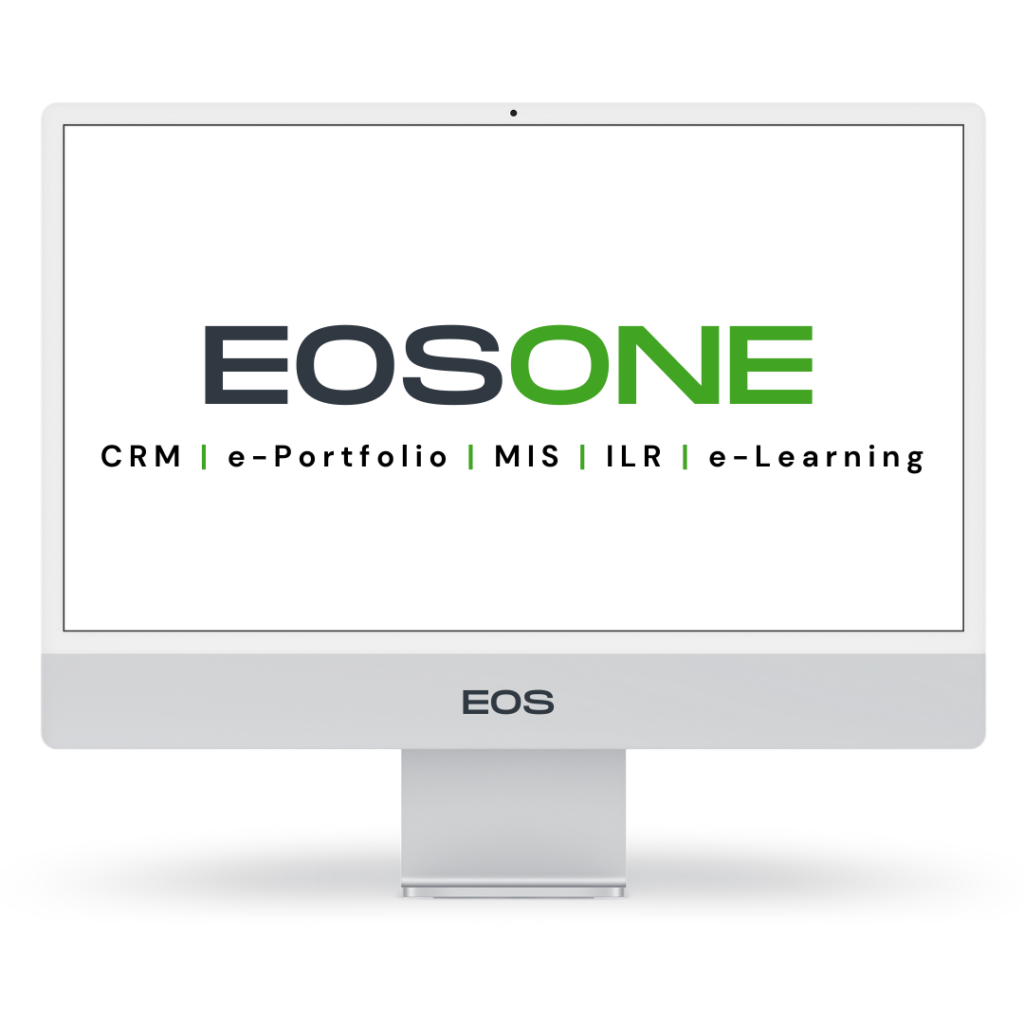
Get rid of the increased opportunity for keying errors that comes with multiple systems. Improve efficiency by removing the unnecessary admin tasks that come with manual processes and spreadsheets. Customise to ensure forms and workflows always fit your business perfectly. Enhance delivery with interactive e-learning resources.

